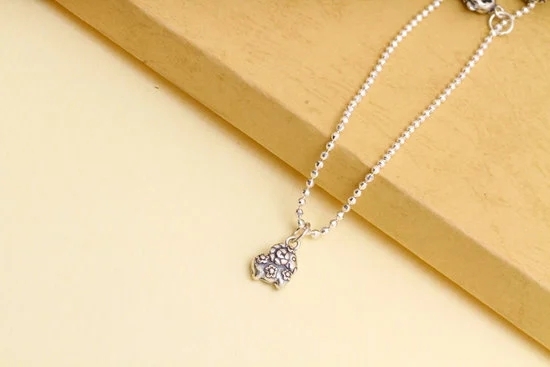Diamonds are not only prized for their beauty and brilliance in the realm of jewelry, but they also possess a remarkable versatility that extends far beyond adornments. From their hardness and heat resistance to their optical and electrical properties, diamonds have found valuable applications in various industries. This article explores the lesser-known uses of diamonds, shedding light on how these precious gems contribute to advancements in technology, medicine, space exploration, energy production, automotive engineering, and even art.
Diamonds have long been recognized as the hardest substance on Earth, making them an invaluable asset in industrial settings. Their exceptional hardness allows them to endure extreme pressures and temperatures, making them ideal for cutting and grinding tools used across multiple industries. The industrial applications of diamonds range from precision cutting instruments for gemstones to drill bits for oil wells. Furthermore, diamond coatings can improve the durability and performance of tools and equipment used in manufacturing processes.
In addition to their prowess in industry, diamonds play a vital role in scientific and medical fields. Their ability to transmit heat makes them essential components in laser technology used for surgical procedures or medical imaging. Diamonds’ precise optical properties enable high-resolution imaging techniques that aid healthcare professionals in diagnosing diseases accurately. Moreover, scientists rely on synthetic diamonds for experimental purposes due to their exceptional durability and chemical stability.
As society continues to push the boundaries of technological innovation, diamonds have cemented their place as a crucial component of modern communication systems. Due to their superior thermal conductivity and resistance to electromagnetic interference, diamonds are utilized in high-performance optical components for telecommunication networks. Additionally, advances in diamond-based material could potentially revolutionize data transmission by enabling faster speeds and more efficient protocols.
From being employed in engines and fuel cells within the automotive industry to adding value to luxury watches and decorative items through art and design forms, diamonds showcase an extraordinary capacity for enhancing various areas of human endeavor. As we delve into each industry’s specific application of diamonds throughout this article, we will uncover the boundless possibilities offered by these multifaceted gems.
The versatility of diamonds beyond jewelry serves as a testament to their enduring allure and intrinsic value in our ever-evolving world.
The Industrial Powerhouse of Diamonds
Diamonds are not only beautiful gemstones used in jewelry, but they also serve as an industrial powerhouse in various industries. The exceptional hardness and heat resistance of diamonds make them highly sought after for their cutting and grinding applications. In fact, diamonds are commonly used as abrasive materials in the manufacturing sector.
Diamonds’ immense hardness allows them to cut through even the toughest materials with precision and efficiency. They are extensively used in industries such as construction, mining, and metalworking for cutting concrete, stones, metals, and other hard materials. Their use in diamond-tipped tools, such as saw blades and drilling bits, ensures high-performance and durability in these demanding applications.
Moreover, diamonds have excellent heat resistance properties that make them ideal for industrial use. They can withstand high temperatures without undergoing significant changes in their physical properties. This makes them invaluable for grinding applications where friction-induced heat is generated. Diamond-coated wheels are used to grind and shape various materials like glass, ceramics, and gemstones.
The versatility of diamonds extends beyond cutting and grinding tools into other industrial applications as well. Due to their outstanding thermal conductivity, diamonds are utilized in cooling systems for electronic components like power amplifiers in the telecommunications industry. Additionally, their electrical insulating properties make them suitable for high-voltage applications.
Diamonds in Medicine and Science
Diamonds may be synonymous with luxury and glamour in the world of jewelry, but their value extends far beyond that. These precious gemstones have found applications in various fields, including medicine and science. The unique properties of diamonds make them indispensable for cutting-edge surgical tools, medical imaging devices, laser technology, and more.
In the medical field, diamonds are utilized in surgical tools due to their exceptional hardness and abrasion resistance. Diamond-coated instruments such as scalpels and drills provide surgeons with precise cutting edges that can maintain sharpness throughout multiple surgeries. Additionally, diamonds are used in medical imaging technology like positron emission tomography (PET) scanners. The high thermal conductivity of diamonds allows for efficient heat dissipation during imaging procedures, ensuring accurate results.
In the realm of science, diamonds play a vital role in various scientific advancements. One notable application is diamond anvil cells (DAC), which enable scientists to create extreme pressures for studying materials under high-pressure conditions. These cells utilize tiny diamond tips to generate immense pressure on a sample of interest, allowing researchers to explore the behavior of materials at levels not previously possible.
Furthermore, diamonds are highly valued in laser technology due to their ability to produce coherent light beams over a broad spectrum. Diamond-based lasers are utilized in scientific research, telecommunications, and even defense applications. Their precision and durability make them ideal for tasks such as cutting through difficult materials or conducting delicate surgery.
In summary, the use of diamonds goes far beyond their traditional association with jewelry. In medicine and science alike, diamonds offer unparalleled properties that enhance precision, durability, and accuracy across a range of applications. Whether it’s providing surgeons with reliable tools or enabling scientists to probe deeper into the mysteries of our world, diamonds continue to contribute significantly to these fields.
| Applications | Benefits |
|---|---|
| Surgical Tools | Exceptional hardness and abrasion resistance for precise cutting edges in surgeries. |
| Medical Imaging | The high thermal conductivity of diamonds allows for efficient heat dissipation during imaging procedures, ensuring accurate results. |
| Diamond Anvil Cells (DAC) | Diamond tips generate immense pressure on samples, enabling scientists to study materials under high-pressure conditions. |
| Laser Technology | Diamond-based lasers offer precision and durability, making them ideal for cutting through difficult materials or conducting delicate surgery. |
Diamonds for Communication and Technology
In today’s world of advanced technology and rapid communication, diamonds play a significant role beyond their traditional use in jewelry. Diamonds have unique properties that make them invaluable in the field of communication and technology. Let’s explore how diamonds are utilized in these industries:
- Optical Components: Diamonds are employed in the telecommunications industry as optical components due to their exceptional optical properties. These properties, including high transparency and low dispersion, allow diamonds to enhance the quality of signals transmitted through fiber-optic networks. Moreover, diamonds can enable the transmission of data at higher speeds by reducing losses in the system.
- High-Speed Data Transmission: Diamonds’ electrical properties make them ideal for high-speed data transmission applications. Synthetic diamonds, known as diamond films or diamond-like carbon (DLC), are used as protective coatings on various electronic devices to enhance conductivity and reduce friction. This aids in improving signal quality while minimizing energy loss.
- Thermal Conductivity: Another valuable property of diamonds is their excellent thermal conductivity, which makes them essential components in cooling systems for electronic devices such as computers and high-power lasers. Diamonds rapidly disperse heat away from sensitive components, preventing overheating and ensuring optimal performance.
Utilizing diamonds’ unique properties has revolutionized communication and technology sectors by enabling faster data transmission, enhancing conductivity, improving thermal management, and increasing efficiency.
Apart from communication and technology, diamonds find applications in various other industries including medicine, science, automotive sector, space exploration, art, and design. Their versatility extends far beyond what meets the eye when it comes to jewelry.
By exploring these diverse applications of diamonds beyond jewelry, we gain a deeper appreciation for their multifaceted nature and potential impact on shaping industries and technologies of the future.
Diamonds in Space Exploration
Diamonds in Space Exploration
Diamonds have proven to be invaluable in various industries, and one of the most fascinating applications is their use in space exploration. The unique properties of diamonds make them ideal for cutting-edge instruments and satellites that withstand extreme conditions beyond Earth’s atmosphere.
In space exploration, diamonds are primarily utilized for their exceptional hardness. The hardness of diamonds allows them to withstand the harsh environments encountered during space missions, such as high temperatures and pressures. This durability makes diamonds perfect for cutting and drilling tools used in extraterrestrial exploration.
One notable example of diamond’s role in space exploration is its use in synthetic diamond windows on satellites. These windows protect sensitive equipment from the harshness of outer space while providing excellent optical properties. Diamonds’ resistance to radiation damage also makes them valuable components in spacecraft instrumentation.
| Application | Description |
|---|---|
| Cutting and Drilling Tools | Diamonds’ exceptional hardness allows them to withstand extreme environments during space missions. |
| Synthetic Diamond Windows | Diamond windows on satellites offer protection and excellent optical properties. |
| Spacecraft Instrumentation | Diamond’s resistance to radiation damage makes it valuable for instrument components. |
Furthermore, diamonds are essential in the development of advanced lasers used in space technology. Lasers play a crucial role in satellite communication, precision measurements, and even laser propulsion systems for spacecraft. Diamonds’ thermal conductivity and transparency to infrared light make them suitable materials for creating high-powered lasers capable of transmitting data across vast distances.
The usage of diamonds in space exploration showcases their versatility and the remarkable potential they offer in shaping our understanding of the universe. Their exceptional properties provide crucial solutions to the challenges faced beyond Earth’s atmosphere, from protection against extreme conditions to enabling advanced communication systems.
Overall, diamonds’ involvement in space exploration highlights their significance beyond the realm of jewelry. As technology continues to advance, diamonds will undoubtedly play an increasingly vital role in fueling scientific breakthroughs and expanding human exploration in outer space.
Diamonds as a Source of Energy
Diamonds, known for their brilliance and durability, have also emerged as a potential source of sustainable energy. Recent advancements in technology have paved the way for utilizing diamonds in diamond-based solar cells and nuclear batteries. With their unique properties, diamonds hold promise in revolutionizing the energy sector.
One application of diamonds in energy production is through diamond-based solar cells. Traditional solar cells are typically made from silicon, but researchers have been investigating the use of diamonds as an alternative material. Diamonds have excellent electrical conductivity and can efficiently convert sunlight into electricity.
Additionally, diamonds exhibit high thermal conductivity, which allows for effective heat dissipation and improves the overall efficiency of the solar cell. By harnessing the power of diamonds in solar cells, we can potentially achieve more efficient and durable renewable energy sources.
Another exciting area of research involves using diamonds in nuclear batteries. The inherent property of diamond to emit electrons when exposed to radiation makes it an ideal candidate for this application. Diamond-based nuclear batteries could be used in space exploration missions where conventional power sources are not feasible. These batteries would offer long-lasting and reliable power supply, allowing spacecraft to operate efficiently even under harsh conditions.
While there are clear advantages to utilizing diamonds for energy production, challenges still exist. One major obstacle is the cost associated with producing synthetic diamonds that meet the required specifications for energy applications. The manufacturing process requires precise control over growth conditions to ensure high-quality diamonds with desired electronic properties. Despite this challenge, ongoing research and development efforts are focused on finding innovative solutions to make diamond-based energy technologies more accessible and cost-effective.
Diamonds in the Automotive Industry
When people think of diamonds, the automotive industry may not be the first thing that comes to mind. However, diamonds have actually found their way into this sector and are being utilized in cutting-edge engines and advanced fuel cells. The unique properties of diamonds make them ideal for enhancing efficiency, reducing emissions, and increasing durability in automotive applications.
Enhancing Efficiency
Diamonds are incredibly hard materials, which gives them an advantage when it comes to improving efficiency in the automotive industry. One area where diamonds are being used is in coatings for engine components, such as piston rings and bearings. These coatings help reduce friction between moving parts, allowing the engine to operate more efficiently. By reducing friction, diamond coatings can contribute to lower fuel consumption and improved overall performance.
Another way diamonds enhance efficiency is through their thermal conductivity. Diamonds have one of the highest thermal conductivities of any material, meaning they can efficiently manage heat transfer. This attribute makes diamonds valuable for use in cooling systems for electric vehicles (EVs) or high-performance engines. Diamond-based materials can effectively dissipate heat from crucial components like batteries or exhaust systems, ensuring optimal performance and extending the lifespan of these parts.
Reducing Emissions
In recent years, there has been a growing focus on reducing emissions from vehicles to combat climate change. Diamonds have proven useful in this regard by contributing to cleaner automotive technologies. One notable application is diamond-coated spark plugs. The diamond coating improves the spark plug’s durability and conductivity while also preventing electrode wear and carbon buildup. This leads to more efficient combustion, reduced emissions, and extended spark plug life.
Additionally, diamonds are being explored for use in advanced fuel cells for electric vehicles. Fuel cells produce electricity through an electrochemical reaction involving hydrogen and oxygen. By using diamond-based catalysts in these fuel cells, researchers have found that they can improve their performance and longevity compared to traditional catalyst materials. Diamond’s excellent electrochemical properties and resistance to corrosion make it an attractive option for making fuel cells more efficient and reliable.
Increasing Durability
The durability of components is crucial in the automotive industry, where vehicles are subjected to constant stress and mechanical forces. Diamonds’ exceptional hardness and wear resistance can play a significant role in increasing the durability of automotive parts. For example, diamond-like carbon (DLC) coatings are being used on engine valves and lifters to reduce friction, wear, and noise. This extends the lifespan of these components and improves overall engine performance.
Another application for diamonds in increasing durability is in cutting tools used during manufacturing processes. Diamond-coated drills or saws have proven effective at cutting through tough materials like carbon fiber or hardened steels without wearing down quickly. This longevity helps minimize downtime, reduce costs, and improve productivity in automotive manufacturing.
Diamonds in Art and Design
Diamonds have long been associated with beauty, luxury, and opulence, making them a natural choice for incorporation into various forms of art and design. While diamonds are most commonly seen in the realm of jewelry, they also find themselves integrated into other artistic creations, adding a touch of glamour and prestige to these pieces.
Luxury Watches
One area where diamonds shine in the world of art and design is in luxury watches. High-end watchmakers often incorporate diamonds into their timepieces to enhance their aesthetic appeal. Diamonds can be found not only adorning the watch face but also encrusted along the bezel or even integrated into the bracelet. These luxurious diamond-studded watches are coveted by collectors and connoisseurs alike for their exquisite craftsmanship and undeniable elegance.
Decorative Items
In addition to jewelry and watches, diamonds are frequently incorporated into decorative items such as sculptures, figurines, and home decor pieces. These one-of-a-kind creations often feature intricate designs that showcase the brilliance of diamonds. Whether it’s an intricately carved diamond-encrusted vase or a stunning sculpture adorned with diamond accents, these decorative pieces demonstrate the versatility of diamonds beyond their traditional use in jewelry.
Exclusive Home Decor
For those who desire extraordinary luxury in their living spaces, diamonds can be utilized as unique accents within high-end home decor items. Diamond-encrusted chandeliers or lamps can provide a dazzling focal point while reflecting light around the room in a captivating manner. Similarly, decorative mirrors adorned with diamond accents can add a touch of glamour to any space.
Including diamonds in art and design opens up endless possibilities for creating truly extraordinary pieces that captivate the eye and evoke a sense of wonderment. By incorporating diamonds into luxury watches, decorative items, and exclusive home decor, designers are able to elevate their creations to unparalleled levels of sophistication. Diamonds not only add aesthetic value but also imbue these pieces with a sense of luxury and exclusivity, making them highly sought after by collectors and art enthusiasts around the world.
Conclusion
In conclusion, diamonds have proven to be an invaluable resource in a wide range of industries and fields. From their industrial applications as cutting and grinding tools to their vital role in medicine and science, diamonds have showcased their unique properties and versatility.
The telecommunications industry also benefits from the use of diamonds in optical components and high-speed data transmission. Furthermore, the hardness and resistance of diamonds make them essential in space exploration, where they are used in cutting-edge instruments and satellites.
Additionally, diamonds hold potential as a source of sustainable energy through diamond-based solar cells and nuclear batteries. In the automotive industry, diamonds are employed to enhance efficiency, reduce emissions, and increase durability. Moreover, beyond their traditional use in jewelry, diamonds are utilized for artistic purposes such as luxury watches, decorative items, and exclusive home decor. They add aesthetic value and luxury to various art forms and designs.
Overall, it is clear that the possibilities of diamonds reach far beyond their association with jewelry. Their unique properties make them indispensable in various industries such as manufacturing, medicine, technology, automotive, space exploration, artistry, and more.
As we continue to explore new frontiers and discover innovative applications for diamonds, it is important to appreciate the multifaceted nature of these precious gems and recognize their potential in shaping industries and technologies for years to come. Diamonds truly prove that they are not just a girl’s best friend but an essential component driving progress and innovation across countless sectors.
Frequently Asked Questions
What else can diamonds be used for?
Diamonds have various uses beyond their traditional role as gemstones. Due to their exceptional hardness, diamonds are widely used in industrial applications. For instance, diamond-tipped tools, such as saw blades and drills, are highly valued for their superior cutting ability when working with hard materials like stone, granite, or concrete.
Additionally, diamonds are utilized in high-pressure research experiments where they serve as anvils due to their resistance to compression. Moreover, synthetic diamonds have found practical applications in electronics, particularly for manufacturing semiconductors and heat sinks due to their excellent thermal conductivity.
Do diamonds have any real use?
While diamonds do not have many practical uses for the average person compared to other materials, they hold significant cultural and historical value as precious gemstones. Diamonds are commonly used in jewelry and adornments due to their extreme hardness and brilliance that make them aesthetically appealing.
Their use in engagement rings has become customary in many cultures as a symbol of love and commitment. While the primary value of diamonds may be subjective and sentimental rather than functional, it does not diminish their significance within certain contexts.
Is there an alternative to diamonds can something else be used in its place?
In some cases, alternatives to diamonds can be used depending on the specific application. For example, cubic zirconia is a popular substitute for diamond in jewelry due to its resemblance and affordability. Other gemstones like moissanite or white sapphire can also mimic the appearance of diamonds while offering distinct characteristics such as different levels of hardness or refractive index.
In industrial settings where extreme hardness is required but cost-effectiveness is crucial, materials like tungsten carbide or ceramic-based composites can serve as alternatives to synthetic diamond coatings or tools. However, it’s essential to note that no single alternative matches all the unique properties of natural or synthetic diamonds across all applications.

Welcome to my jewelry blog! My name is Sarah and I am the owner of this blog.
I love making jewelry and sharing my creations with others.
So whether you’re someone who loves wearing jewelry yourself or simply enjoys learning about it, be sure to check out my blog for insightful posts on everything related to this exciting topic!





